How to See the Liberty Bell...in Queens
A copy of the famous American bell can be found inside a bank, which itself is modeled after Independence Hall!


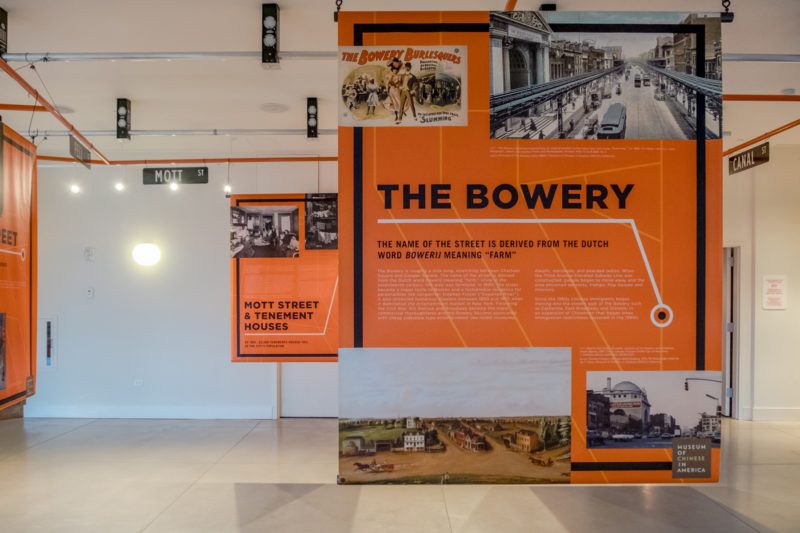
Photo courtesy of Alyssa Loorya/Chrysalis Archaeological Consultants
Like most buildings in Chinatown, Hotel 50 Bowery, located at 50 Bowery, has led many lives. It was once a tavern, the Atlantic Garden (a famous German beer garden), a theater, a hotel and a stove dealership. Most recently, it has been a Chinese restaurant, a Popeyes, and a Duane Reade. In recent years, an excavation for the hotel, with archaeological documentation done by Chrysalis Archeological Consultants, uncovered a treasure trove of historical artifacts beneath the site, from a German mineral water bottle to an English creamer jug.
Then, in May 2017, 50 Bowery became home to the 22-story “Hotel 50 Bowery,” the first Joie de Vivre boutique hotel in New York City. Adding on to 50 Bowery’s layers of history, the hotel is also the site of an exhibit called “Heart of Chinatown,” which relays the Bowery’s vibrant, ever-changing history. Along with 50 Bowery, The Museum of Chinese in America (MOCA) installed this permanent, 1,500 square-foot exhibit on the second floor of the hotel in The Gallery.
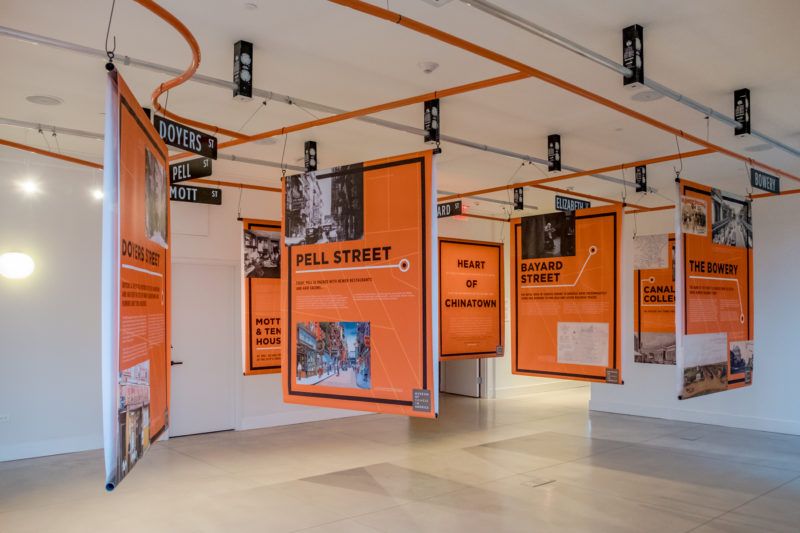
Photo courtesy of Alyssa Loorya/Chrysalis Archaeological Consultants
Inside the exhibit, you’ll see multiple panels about the history of Chinatown’s main streets, from Bowery to Canal street and Doyers street. These panels hang from a framework of orange pipes with actual street plates to mimic the streets themselves.
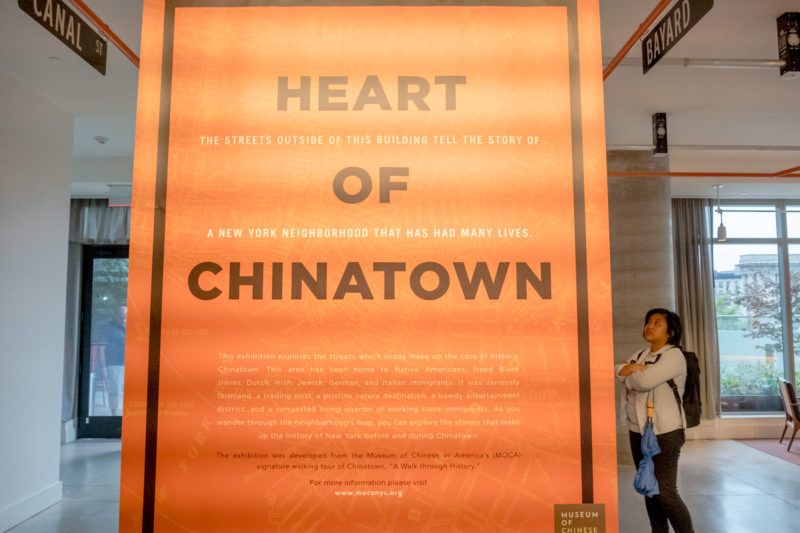
Photo courtesy of Alyssa Loorya/Chrysalis Archaeological Consultants

Photo courtesy of Alyssa Loorya/Chrysalis Archaeological Consultants
You can see some of the artifacts uncovered beneath 50 Bowery in a wooden, framed exhibition case along a wall. These objects include Dr. Hostetters Stomach Bitters (which 50 Bowery’s archaeological team, Chrysalis Archeological Consultants, found a recipe for and brewed), a pressure cooker lid, glass beer mug, clay smoking pipe, stoneware mug, and a tile that is a remnant of the Atlantic Beer Garden. The history of the site resonates ever greater with more Atlantic Garden memorabilia gathered by the property owner, including a mug and token.
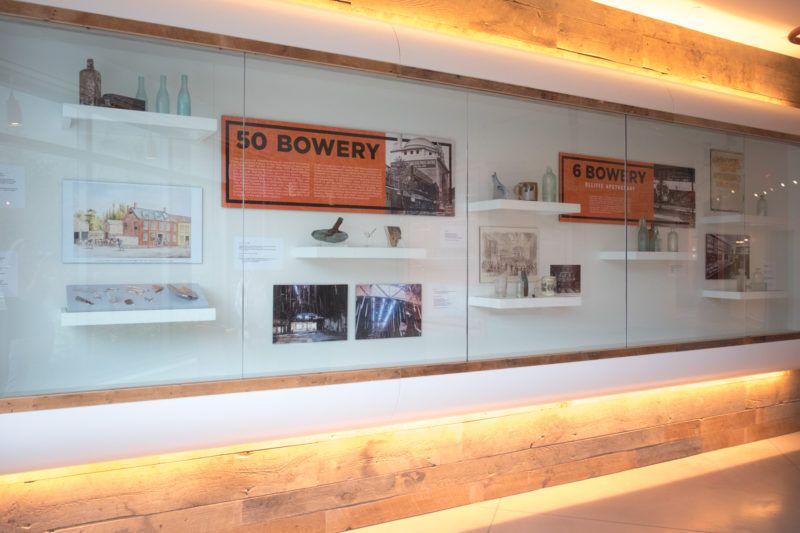
Photo courtesy of Alyssa Loorya/Chrysalis Archaeological Consultants

Photo courtesy of Alyssa Loorya/Chrysalis Archaeological Consultants
The exhibit also takes visitors back in time with its display of original bottles from the Olliffe Apothecary, which once stood nearby at 6 Bowery. Even the brick wall at the hotel lobby pays tribute to the Bowery’s history, with its protruding bricks from the basement of the Atlantic Garden, some of which was archaeologically recovered.
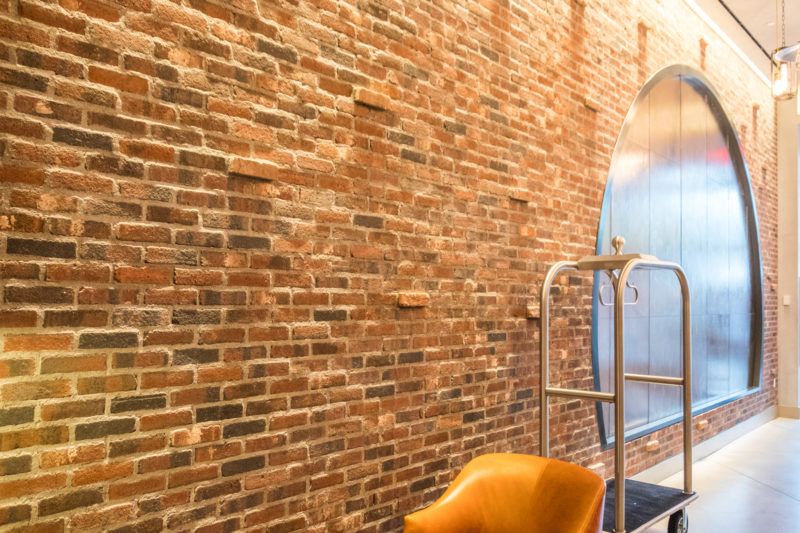
Photo courtesy of Alyssa Loorya/Chrysalis Archaeological Consultants
The commitment to preserving the history of 50 Bowery was further shown when, during the construction of the hotel, a time capsule was placed in the building. The idea came from reports that a time capsule was placed in the cornerstone of the nearby Bowery Theatre.
The Curator and Director of Exhibitions of MOCA, Herb Tam, said it was the first time he’s curated an exhibit inside a hotel. One of the most challenging parts for him was visualizing the exhibit’s space when the hotel did not yet exist.
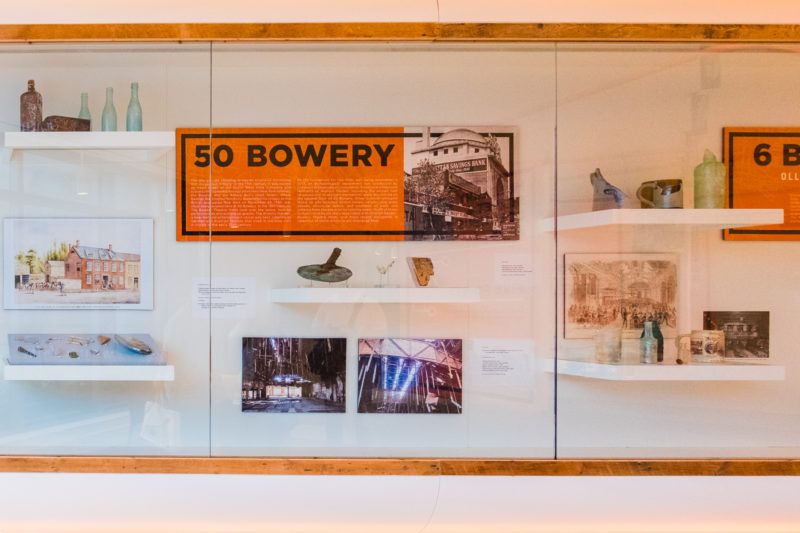
Photo courtesy of Alyssa Loorya/Chrysalis Archaeological Consultants
“Heart of Chinatown,” located on the second floor of Hotel 50 Bowery, is free and open to the public. As a satellite exhibit of MOCA, “Heart of Chinatown” supplements MOCA’s permanent exhibit, “With a Single Step,” at the museum’s main location at 215 Centre Street.
See some of the artifacts that were uncovered beneath 50 Bowery below, along with photos we took of the artifacts when we were given special access to the site last year:

Photo by Chrysalis Archeological Consultants

Photo by Chrysalis Archeological Consultants
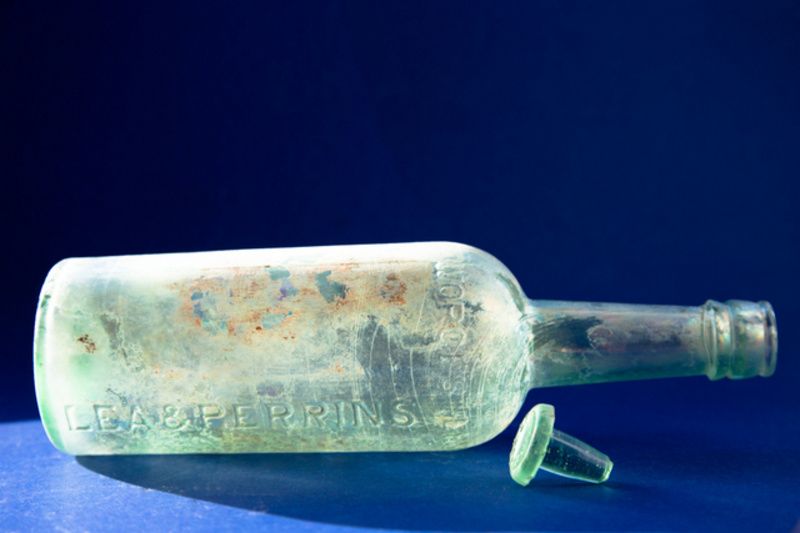
Photo by Chrysalis Archeological Consultants

Photo by Chrysalis Archeological Consultants
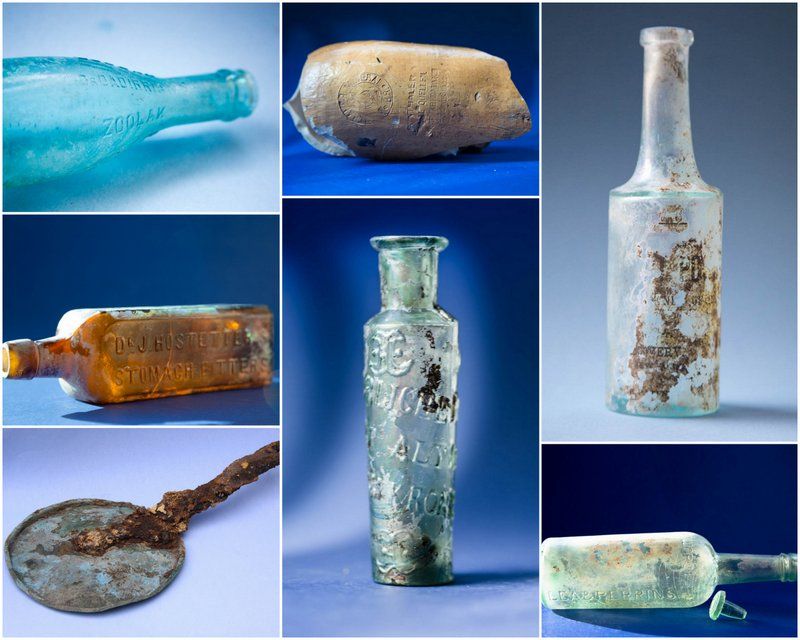 Photo by Chrysalis Archeological Consultants
Photo by Chrysalis Archeological Consultants


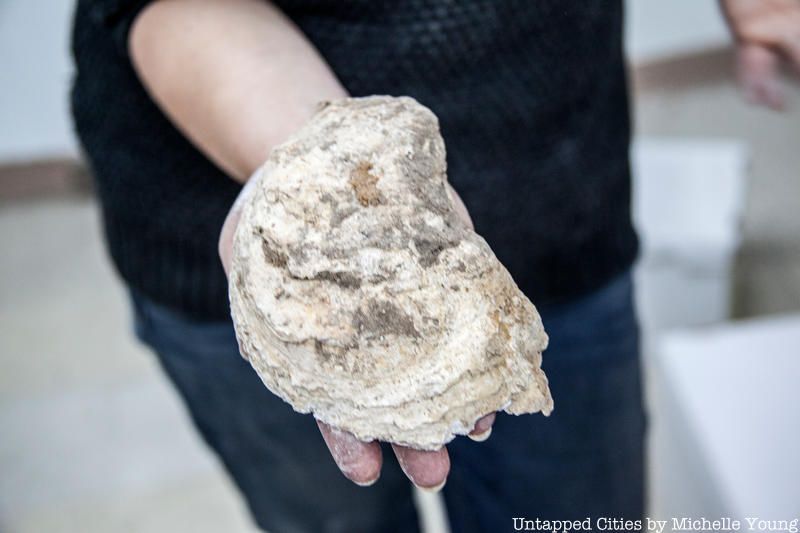
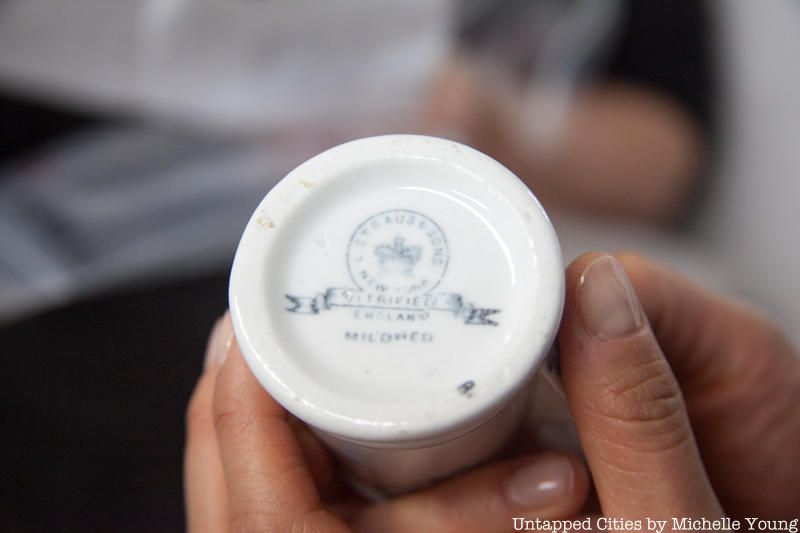
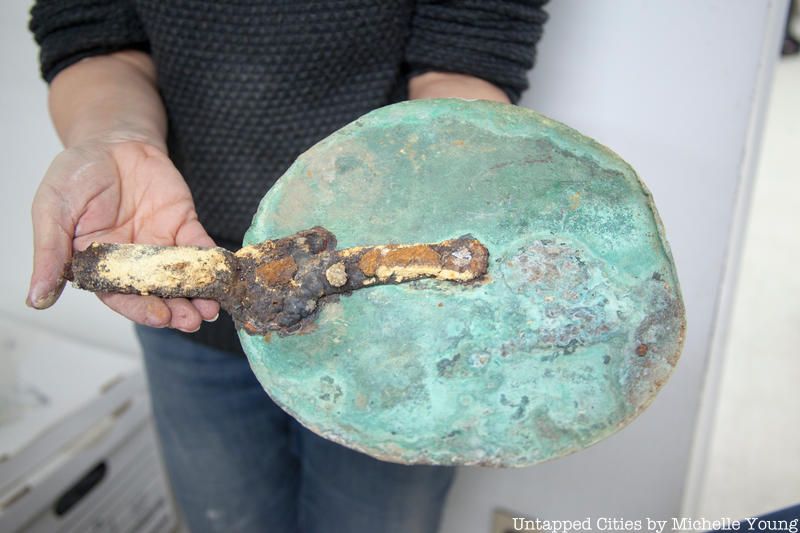
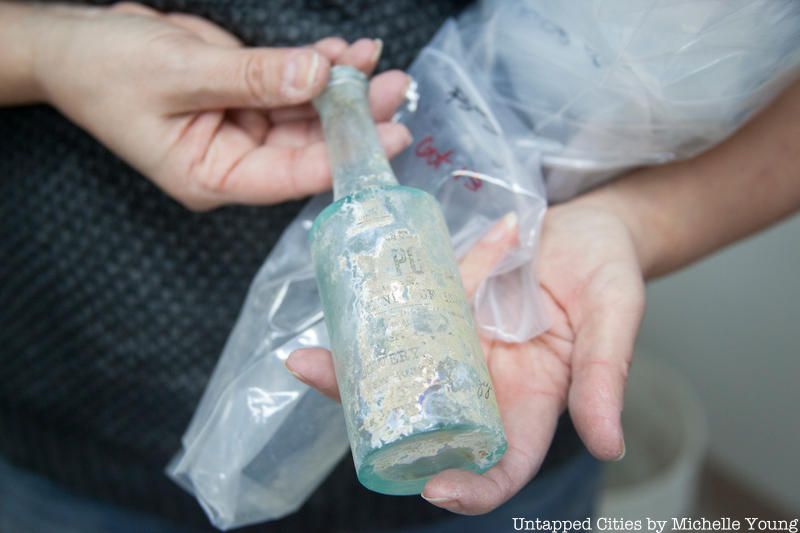
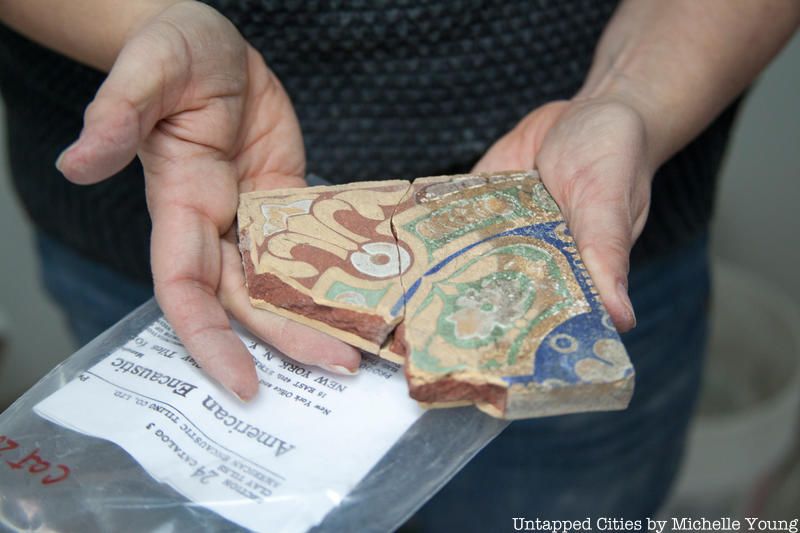
Next, check out 15 Historical Archeological Finds Discovered Beneath 50 Bowery, Former Atlantic Garden in Chinatown and Inside the Abandoned Amato Opera House on the Bowery in the Lower East Side.
Subscribe to our newsletter